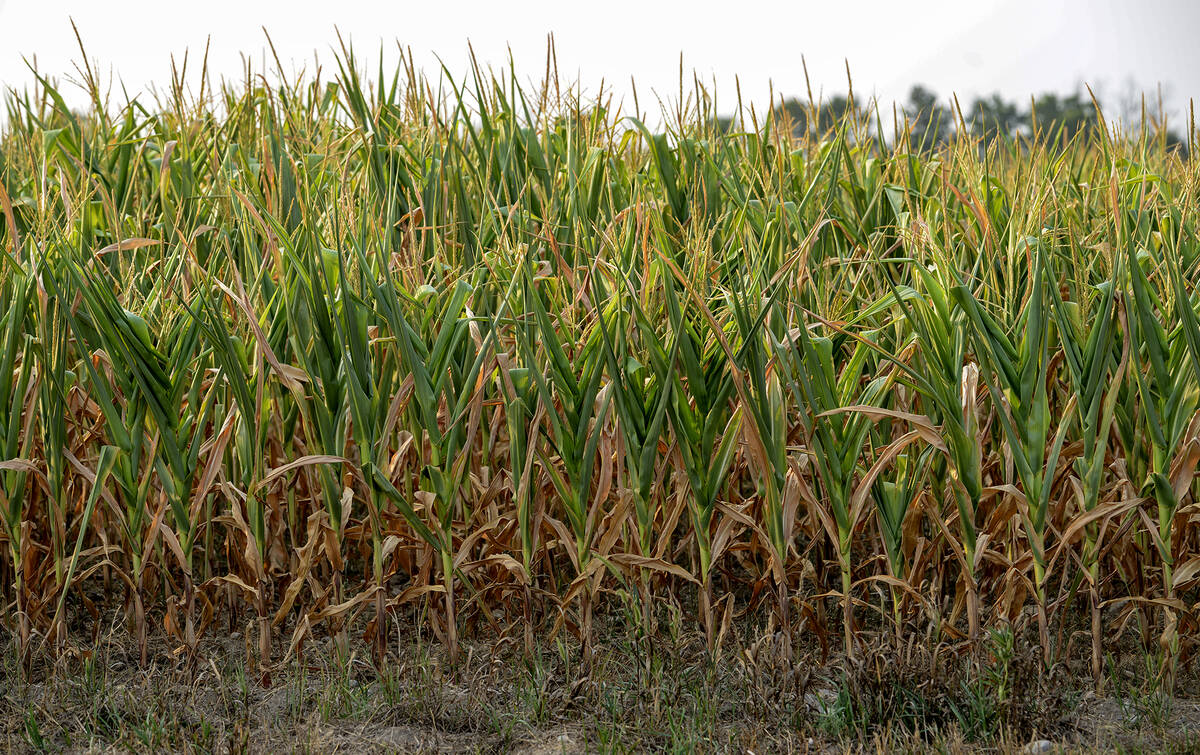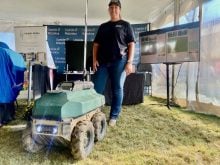The 2018 growing season is remembered for corn damage caused by gibberella ear rot infections and high concentrations of deoxynivalenol (DON). There were discrepancies and frustrations over acceptability of harvested loads. One elevator would reject a load but a second or third might take it, albeit with discounts for varying mycotoxin concentrations.
Why it matters: Disease and mould management will be more challenging as the risk of extreme weather increases.
The 2023 growing season brought a similar experience. Although ear rot infection was lower compared to 2018, elevator personnel were more familiar with resulting DON levels and how to deal with them.
Read Also

Extreme variability marks Ontario’s 2025 corn crop
The yield potential of Ontario’s 2025 corn crop was lost in some areas due to extreme dry conditions.
However, it was agreed more information on hybrids’ susceptibility to DON would provide further guidance.
That’s why the Ontario Corn Committee, in cooperation with nine seed companies and 11 other groups, began testing hybrid susceptibility to DON in 2019. It recently released the inaugural Ontario Corn Hybrid DON Screening Report, based on hybrid testing from 2019 to 2023.
Testing was designed to identify the relative resistance of hybrids across multiple environments at two locations and at three planting dates at each location per year.
The report said there are no DON-resistant hybrids but findings provide a relative risk assessment. Additional information from seed companies and field trial results should be used to make hybrid decisions based on DON risk, the authors said.

Ben Rosser, corn specialist with the Ontario Ministry of Agriculture, Food and Rural Affairs, said 2019 was a learning year because the trials and methods were new. In the current report, data are presented for hybrids entered in 2023 but include data from the previous four years of trials.
“There were some concerns that DON hybrid trial results were not always representing the risks of hybrids as observed in real life in the initial year,” says Rosser, who chairs the OCC.
“Protocols were refined, such as including three planting dates instead of only one, to produce more reliable data. It was generally agreed that results would be released once the trials produced a couple of years of data that participants believed were reliable.”
The right environment
It is a challenge to create conditions in which gibberella ear rot can thrive.
According to the OCC report, 10 plants per row were hand-inoculated from full silk to the first sign of silk browning, then mist-irrigated on timers every day for roughly four weeks after inoculation. The corn was hand-harvested, dried, shelled and analyzed for DON.
Other moulds can be a concern for growers, but gibberella and resulting DON levels are the primary concerns.
“It’s one of the ear moulds that does better in cooler, wetter corn-growing regions like Ontario,” says Rosser. “It’s the main concern for DON mycotoxin, which has maximum regulated limits for feed use, and it tends to be watched most closely through the corn chain.”
The goal is to provide as much information as possible to growers, with as many hybrids entered as were provided by seed companies.
“There were 45 entries in 2023, so it only represents a subset of hybrids available in the province,” says Rosser.
“But there was an emphasis on entering hybrids that would be grown in the areas of the province where DON is typically the greatest issue. Corn hybrids are not under a registration program like other crops, so it’s completely voluntary for companies to participate and the corn committee appreciates the participation we receive.”
Of the 45 entries in 2023, DON levels in 16 hybrids were similar to the susceptible check while two were statistically higher.
Participants in the Ontario Corn Hybrid DON Screening Report
- Agriculture and Agri-Food Canada
- Ontario Ministry of Agriculture, Food and Rural Affairs
- University of Guelph, Ontario Soil and Crop Improvement Association
- Grain Farmers of Ontario
- Ontario Agri Business Association
- Ontario Certified Crop Advisors
- Ontario Pork
- Seeds Canada
- Suncor
- Ingredion
- Greenfield Ethanol
- Brevant (Corteva AgriScience)
- Country Farm Seeds
- Croplan (Winfield United)
- Dekalb (Bayer CropScience)
- Maizex Seeds
- NK Brand (Syngenta Seeds Inc.)
- Pioneer Hi-Bred Canada
- Pride Seeds (AgReliant Genetics Inc.)
- Saatbau Linz













